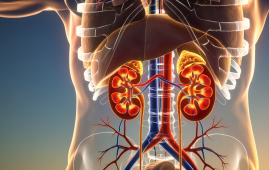

Summary:
A comprehensive analysis of U.S. children aged 3–17 reveals a worrying rise, nearly 46% by 2023, in chronic conditions, obesity, and functional impairments. The risk of mortality remains 1.8 times higher than in comparable countries. Experts call for systemic change to address environmental, nutritional, and social contributors.
Explore all Pediatrics CME/CE Conferences in the USA to learn about new developments in pediatrics and child care.
Why Children’s Health Is Declining?
Children in the United States are experiencing a concerning rise in chronic conditions, with nearly 46% aged 3–17 affected by at least one diagnosis by 2023. These include idiopathic diabetes, early puberty, obesity, and neurodevelopmental delays, each of which contributes to reduced quality of life and long-term comorbidity risk. These findings reflect an overall declining trend in children’s physical and mental health, as revealed through a 17-year analysis of national surveys and pediatric EHR data.
Clinical data further indicates elevated rates of depression, social isolation, and sleep disturbances, all of which intersect with systemic issues such as food insecurity and environmental exposures. These shifts signal an urgent need for public health intervention and precision-based pediatric management.
Comparative Analysis: United States vs OECD Nations
U.S. infants face 1.78 times higher mortality, while those aged 1–19 are 1.8 times more likely to die compared to their counterparts in 18 OECD countries. Preventable causes include prematurity, SIDS, firearm incidents, and motor vehicle accidents, a clear sign of the country’s widening health disparities
“In the course of conducting this study, there wasn’t a single statistic that was startling, but instead comprehensive data over several years, including millions of children, all pointed to the same trends, which was an overall decline in the health of children and youth.”
Christopher B. Forrest, MD, PhD, senior study author, Professor of Pediatrics at CHOP, Director of the Applied Clinical Research Center, and Director of PEDSnet
Advancements, Inflammation & Biomarkers in Pediatric Health
Beyond epidemiological data, clinicians are focusing on molecular markers of inflammation to better understand disease risk. Studies point to altered macrophage polarization (M1/M2), dysregulated cytokine profiles, and the presence of proteins in CSF as potential indicators of pediatric inflammatory disorders.
In particular, molecules such as M-CSF, monocytes, and intracellular nucleic acids are being examined in the context of neonatal pneumonia, metabolic syndromes, and heart polarization pathways. These markers may soon become essential in early detection and risk stratification in pediatric populations.
Key Inflammatory Questions (FAQs)
Which of the following is incorrect about inflammation?
An often-misunderstood aspect of pediatric inflammation is the role of M1 macrophages. Contrary to some assumptions, inflammation does not suppress lysosomal activity; instead, it enhances lysosome-mediated phagocytosis.
What are proinflammatory cytokines?
TNF-α, IL-1β, and IL-6 are principal cytokines released during acute and chronic inflammation. These molecules drive immune cell recruitment and mediate systemic inflammatory responses.
How old is TNF Fitness?
TNF-α was first isolated in the 1970s. The phrase “TNF Fitness” likely alludes to its early discovery and ongoing relevance in immunological studies.
Conclusion
As chronic illness and preventable mortality rise among U.S. children, clinicians are being challenged to re-evaluate pediatric care models through the lens of molecular diagnostics, inflammatory research, and preventive strategies. Continued data-sharing and clinical collaboration will be essential in reshaping a healthcare landscape that supports improved outcomes across physical, neurological, and developmental domains.
For more information: Forrest, C. B., et al. (2025). Trends in US Children’s Mortality, Chronic Conditions, Obesity, Functional Status, and Symptoms. JAMA. doi.org/10.1001/jama.2025.9855.
more recommended stories
 Urine-Based microRNA Aging Clock Predicts Biological Age
Urine-Based microRNA Aging Clock Predicts Biological AgeKey Takeaways (Quick Summary) Researchers developed.
 Circadian Control of Neutrophils in Myocardial Infarction
Circadian Control of Neutrophils in Myocardial InfarctionKey Takeaways for HCPs Neutrophil activity.
 E-Cigarette Use and Heart Attack Risk in Former Smokers
E-Cigarette Use and Heart Attack Risk in Former SmokersKey Takeaways for Clinicians and Nurses.
 Ultramarathon Physiology: What HCPs Should Know?
Ultramarathon Physiology: What HCPs Should Know?Ultramarathon Metabolism: What Happens to the.
 High-Intensity Training and Oxidative Stress Insights
High-Intensity Training and Oxidative Stress InsightsNew Evidence Linking High-Intensity Training and.
 Sterilized Fermented Beverage for Obesity: New Evidence
Sterilized Fermented Beverage for Obesity: New EvidenceEarly Insights Into a Sterilized Fermented.
 36-Week Pre-eclampsia Screening May Reduce Term Risk
36-Week Pre-eclampsia Screening May Reduce Term RiskA New Preventive Strategy for Term.
 Cardiovascular Risk and Sudden Cardiac Death in Diabetes
Cardiovascular Risk and Sudden Cardiac Death in DiabetesRising Sudden Cardiac Death (SCD) Risk.
 Poor Kidney Function and Alzheimer’s Biomarkers Explained
Poor Kidney Function and Alzheimer’s Biomarkers ExplainedPoor kidney function may influence levels.
 Perinatal Mental Health Challenges Highlighted in New Study
Perinatal Mental Health Challenges Highlighted in New StudyMental Health Challenges in New Parents:.

Leave a Comment